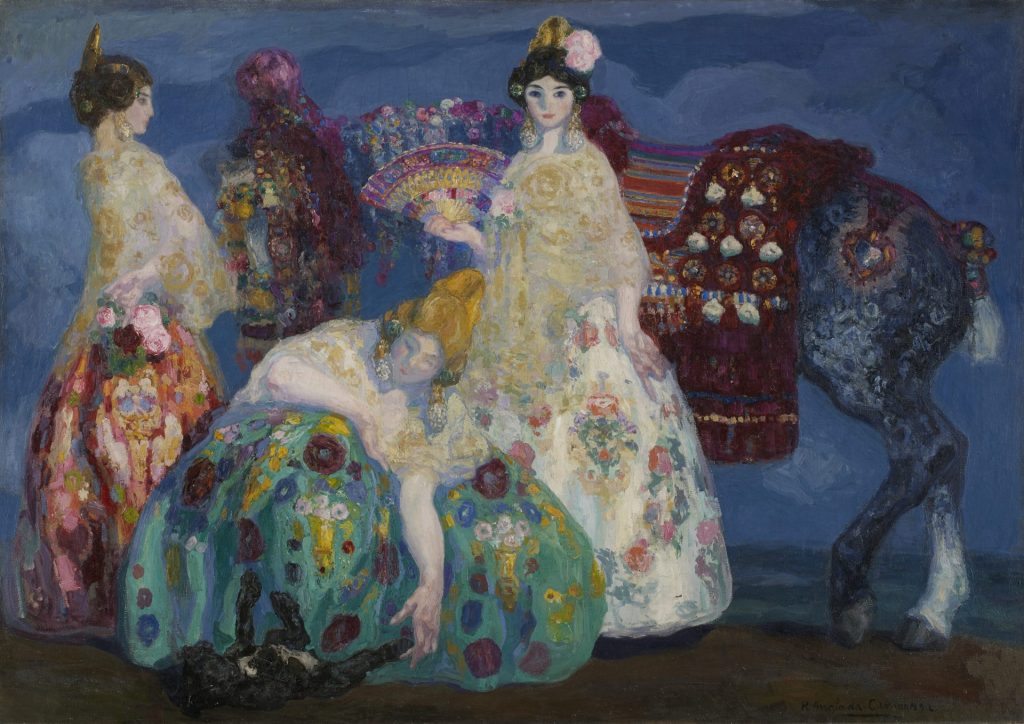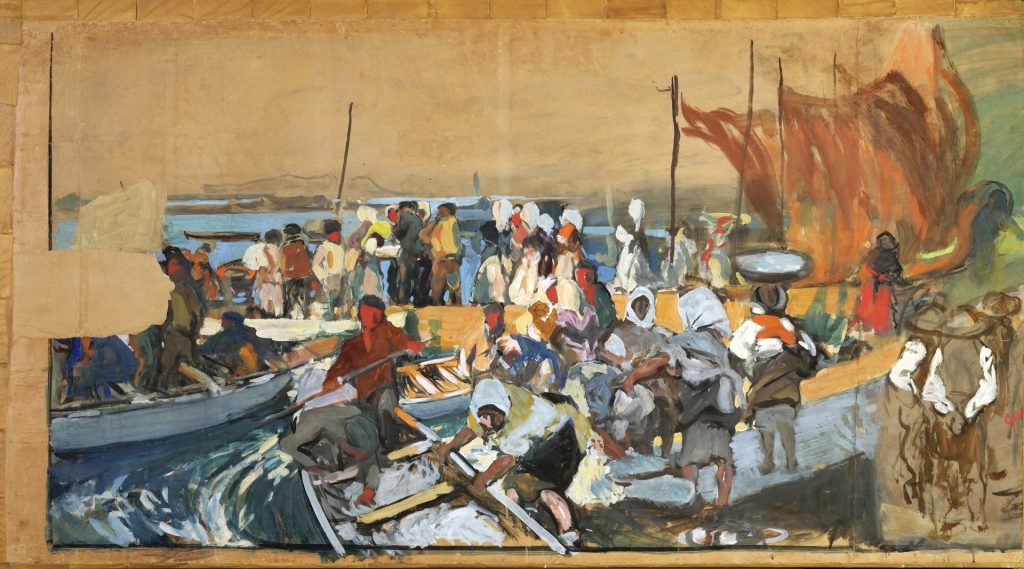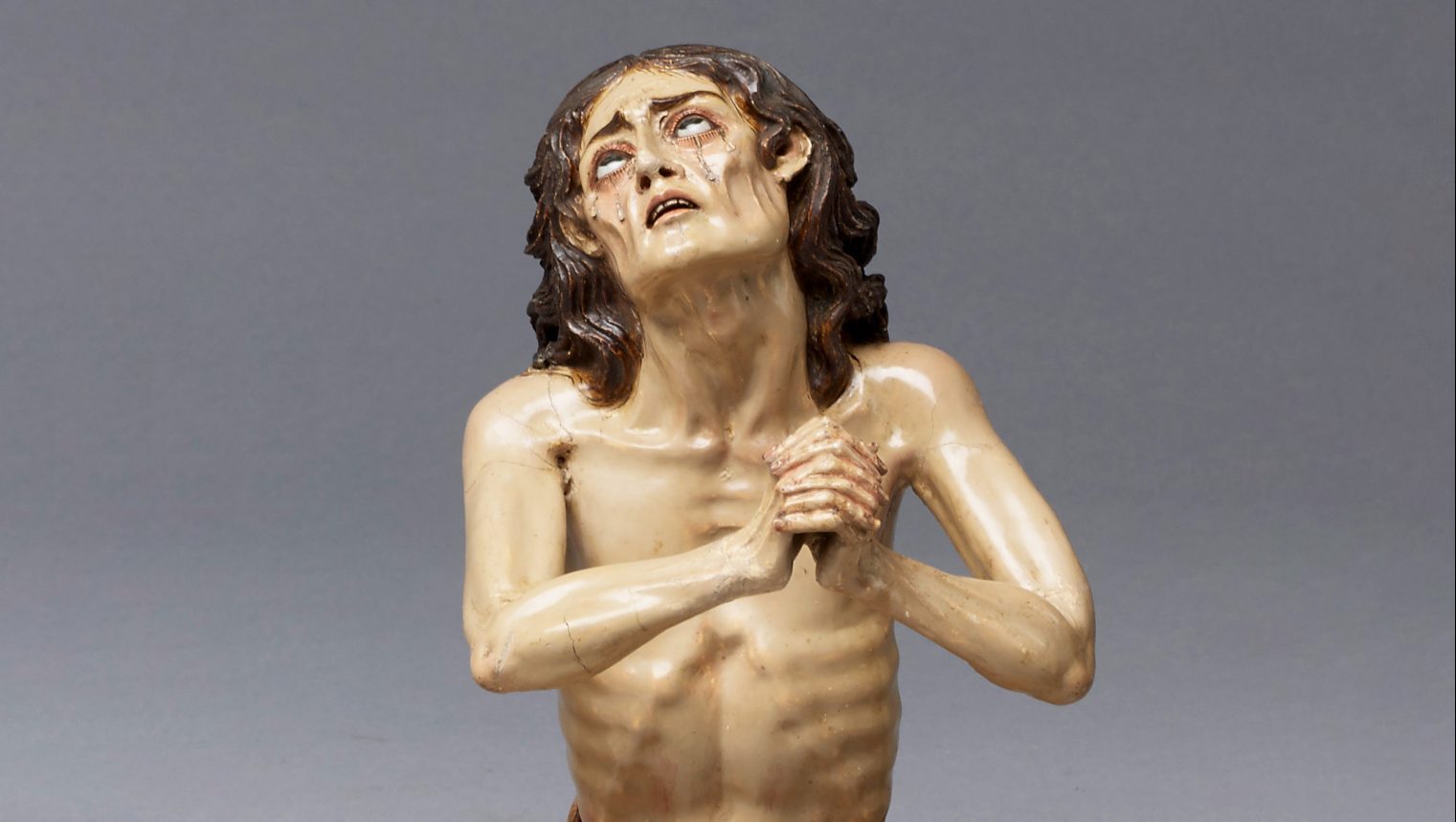The relationship between art and conquest isn’t often made explicit, but in a new exhibition showcasing the remarkable collection of the Hispanic Society, it is woven into the fabric of everything we see: blood and beauty,
riches and violence are expressed in pungent wafts of castanet-clacking
Spanishry, a cliche that this show reinforces, then confounds and dismantles by turns.
Arranged chronologically, the 150 objects date from prehistory to the early 20th century and include paintings, sculptures, ceramics and textiles, books and manuscripts, maps and furnishings from the Iberian peninsula and the
wider Hispanic world, in the Americas and the Philippines. Together they tell a story of relentless and brutal expansionism: in Spain itself, with the
expulsion of Muslim rulers and their people in the 15th century, into the Low Countries, Naples and Sicily, and ultimately into the so-called New World, where Spanish invaders seeded colonial cultures with their own distinct flavour.
The exhibition, Spain and the Hispanic World: Treasures from the Hispanic Society Museum & Library, makes clear that cross-cultural fertilisation was a characteristic of the Iberian peninsula from its early history; the comings and goings of ancient civilisations, from the Bell Beaker people, c.2400-1900 BC, to the Celts and the Romans, represented in examples of pottery, sculpture and metalwork. Looking at them, time loops beguilingly, and among display cases of medieval ceramics and 17th-century door knockers embellished with whimsical creatures both real and fantastical, thoughts of Picasso are unavoidable.
The central galleries have been organised to avoid the piecemeal effect so often the downfall of exhibitions of diverse objects of varying scale. The
visual and material opulence of the objects helps, and there’s no avoiding
the mawkishly hyperreal heads of saints, and much smaller, suffering heads of Christ and the Virgin Mary, made by the exhibition’s only named female artist, the sculptor Andrea de Mena, who died in Málaga in 1734. A baptismal font dated c.1400-1450 is a special moment in the exhibition, a break in what is otherwise an onslaught of brutal glory-seeking to mark the assimilation of multiple traditions and cultures. Made from tin-glazed earthenware, the speciality of Muslim potters based in Toledo, this Christian object narrates a utopian dream, of Christianity, Judaism and Islam assimilated in a state of mutual respect and understanding.
The marriage of Ferdinand II of Aragon and Isabelle I of Castile in 1469 put an end to tolerant co-existence in the pursuit of a unified state under a single church and crown, and following the defeat of Spain’s last Muslim ruler in Granada in 1492, Muslims and Jews in Spain faced forced conversion to Christianity, or expulsion.
But if the suppression of Spain’s Muslim and Jewish population marked a
humanitarian and cultural loss, the flow of wealth, ideas and influence through Spain’s expanding empire continued. The velvet of a liturgical vestment dating from the 15th-16th centuries comes from Granada, but its wonderful embroidery is likely to be Flemish; similarly, Luis de Morales’s painting Christ Presented to the People (Ecce Homo), c.1565-70 employs a degree of naturalistic detail that suggests the work of northern European artists.
The court and the Catholic church projected and consolidated their unprecedented power through their patronage of the arts, represented here
by devotional paintings by El Greco and large-scale portraits by Philip IV’s court painter, Diego Velázquez, who took up his post in 1623. There are large-scale figures that once formed part of enormous, sculpted and richly painted
altarpieces, and examples of luxurious illuminated manuscripts, notably a
black book of hours commissioned during a period of royal mourning.
A portrait miniature by El Greco makes an interesting aside, and reveals the influence of one of his mentors, who was a miniaturist, but also suggests the
easy exchange of ideas and methods between different art forms, especially
small-scale objects that could be easily transported from place to place.
The convergence of the intangible realms of religion and the imagination with the brutal business of exploration and the acquisition of territory is most strikingly expressed in maps and handbooks that served both as necessary tools and triumphant symbols of conquest. By about 1585, the date of a remarkably well-preserved Manual of Nautical and Astronomical
Instructions, Christopher Columbus’s “discovery” of America was almost a
century old, in which time navigational methods and the shape of the known
world had been transformed.
One of the real treasures of the exhibition is Giovanni Vespucci’s World Map of 1526, which with its illustrations of ships, and details of geographical features and resources to be plundered, describes an almost feverish need to lay claim to every inch of the earth.

Spain was hardly alone in the pursuit of empire, but its territories in the Americas were enormous, and divided into two administrative areas, Nueva
España (which included modern-day Mexico and Guatemala) and Peru (including Peru, Bolivia and Ecuador). Nueva Granada was added later,
comprising Colombia and Venezuela, and Mar de la Plata, made up of
Argentina, Chile, Uruguay and Paraguay, all of which remained under colonial rule until the 19th century.
The devastation was immense, with the destruction of the Inca and Aztec
civilisations and the introduction of western diseases, notably smallpox. The
sense of these great cultures being brought under the yoke of western
invaders is powerfully, and rather movingly, conveyed in a display of portable writing cabinets – essential tools of administration – embellished with indigenous designs.
Mercilessly practical, the colonisers’ use of indigenous labour and knowledge was not confined to slave labour, and a map of the Ucayali River, a tributary of the Amazon, is a brilliantly drawn bestiary created by local artists accompanying a detachment of Franciscan missionaries. But for all its exquisite detail and awestruck evocation of teeming flora and fauna, the map treats people as decorative curiosities, as yet blithely unaware of their fate.
In its divide-and-conquer approach to its colonial subjects, the Spanish empire adopted a rigid caste system, the lighter skins of the European ruling class at the top of the hierarchy, with black African slaves, transported to the Americas to work on the plantations, at the very bottom. “Caste paintings”, such as one dated c.1715 from a series by the Mexican artist Juan Rodríguez Juárez, were popular among colonial administrators, reinforcing the hierarchy by cementing the divisions between people.
Somewhat surprisingly, in the second of three galleries devoted to colonial
Latin America, the curators (Per Rumberg and Adrian Locke of the Royal Academy, and Guillaume Kientz, director of the Hispanic Society), emphasise the European colonisation of the Americas as a time of artistic
flourishing: it was not, they say, “a period simply marked by destruction”. But while Christian imagery rendered in indigenous techniques, or decorative ceramics made from a black micaceous clay known for its medicinal qualities, show indigenous craftspeople adapting their work for a European market, the beauty of the objects hardly mitigates the suffering implicit in their creation. In fact, it is horribly easy to imagine that a set of vividly coloured sculptures of tormented souls in hell and purgatory, made in Ecuador c.1775, were drawn from experience.
Elsewhere in the exhibition, the experiences of indigenous peoples are more directly referred to, as in a watercolour of The Silver Mines at Potosí, c.1585, by an unknown artist working in Bolivia. Here, the vastness of the mine on the slopes of the Cerro Rico (Rich Mountain) dwarfs the tiny workers below, who by their universally dark skins can be identified as either indigenous labourers or African slaves.
The central gallery takes us back to 18th-century Spain, with paintings and
drawings by Goya serving as the exhibition’s climax. His portrait of the
Duchess of Alba, last seen in London at the National Gallery in 2016, is such a touchstone of Spanish painting that it’s no surprise that it has been chosen for the exhibition’s publicity material. On the adjacent wall is the portrait of the army officer Manuel Lapeña, 1799, an unimpressive figure who nevertheless has command of the troops on parade behind him.

Such nuances are brought out by the hang, which sets up a dialogue between
Goya’s works and the abuses of power explored in the preceding galleries. The inclusion of Goya’s drawing Ay Pulgas? (Are There Fleas?), 1796-97, an
image used in his famous satirical series Los Caprichos, also encourages
viewers to look for the irreverent elements in his work. Goya’s portrait of the Duchess of Alba is full of hints of a love affair, most obviously the words “Solo Goya” (“Only Goya”) written in the sand by her feet; here, we are more
inclined to focus on the class dynamics suggested by her maja costume, which, according to the fashion of the time, mimicked the flamboyant appearance of lower-class women.
The exhibition’s final rooms reflect on the social and political changes that affected Spain in the 19th and early 20th centuries, and the opening in 1908
of the Hispanic Society of America in New York by the Hispanophile and
philanthropist Archer M Huntington. Contrasting visions of Spain are offered in the golden fantasies of Joaquín Sorolla, a hugely successful artist in his own lifetime who painted idyllic but beguilingly naturalistic scenes of
sun and sea.
Huntington first saw Sorolla’s paintings on a trip to London, and was struck by the contrast with Ignacio Zuloaga, to whose work he was introduced in Paris on the same trip. Zuloaga’s The Family of the Gypsy Bullfighter, 1903, is one of the highlights of this exhibition, its strikingly theatrical costumes
suggesting a lucrative but bogus tradition that had, along with many aspects of Spanish regional identity, become politically charged following the loss of the American colonies only a few years before.
Huntington recognised the significance of these contrasting images of Spain, and this penultimate gallery echoes an exhibition he staged in New
York in 1909. There are many new discoveries to be made among the Hispanic Society’s 20th-century paintings, including the deeply unsettling street scenes of José Gutiérrez Solana, two of which are on show here. Mariners of Castro Urdiales, 1915-17, is an anti-idyll; the fishermen of this town in northern Spain, their faces as hard as the cliffs that rise up behind them, are pitted in a daily battle against the elements, the baskets at their feet full of sardines glittering like jewels.
The exhibition ends, rightly, with a tribute to the Hispanic Society itself, a
set of gouache studies painted by Sorolla for Vision of Spain, a mural cycle commissioned by Huntington following the success of the 1909 exhibition, and permanently installed at the Hispanic Society Museum & Library. Painted on a roll of kraft paper, the sketch on loan here starts on the left with a view of the Cantabrian coast, moving through “Green Spain” to Castile and León, the landscape becoming gradually more arid as it moves towards Toledo.
The sketch, like the exhibition, celebrates Spain in all its many guises, and the remarkable achievements of Archer M Huntington, whose unique visual archive of the Hispanic world will be reinstalled later this year in its newly renovated New York home.
Spain and the Hispanic World: Treasures from the Hispanic Society Museum & Library, Royal Academy until April 10, 2023
Florence Hallett is a freelance art writer and critic




